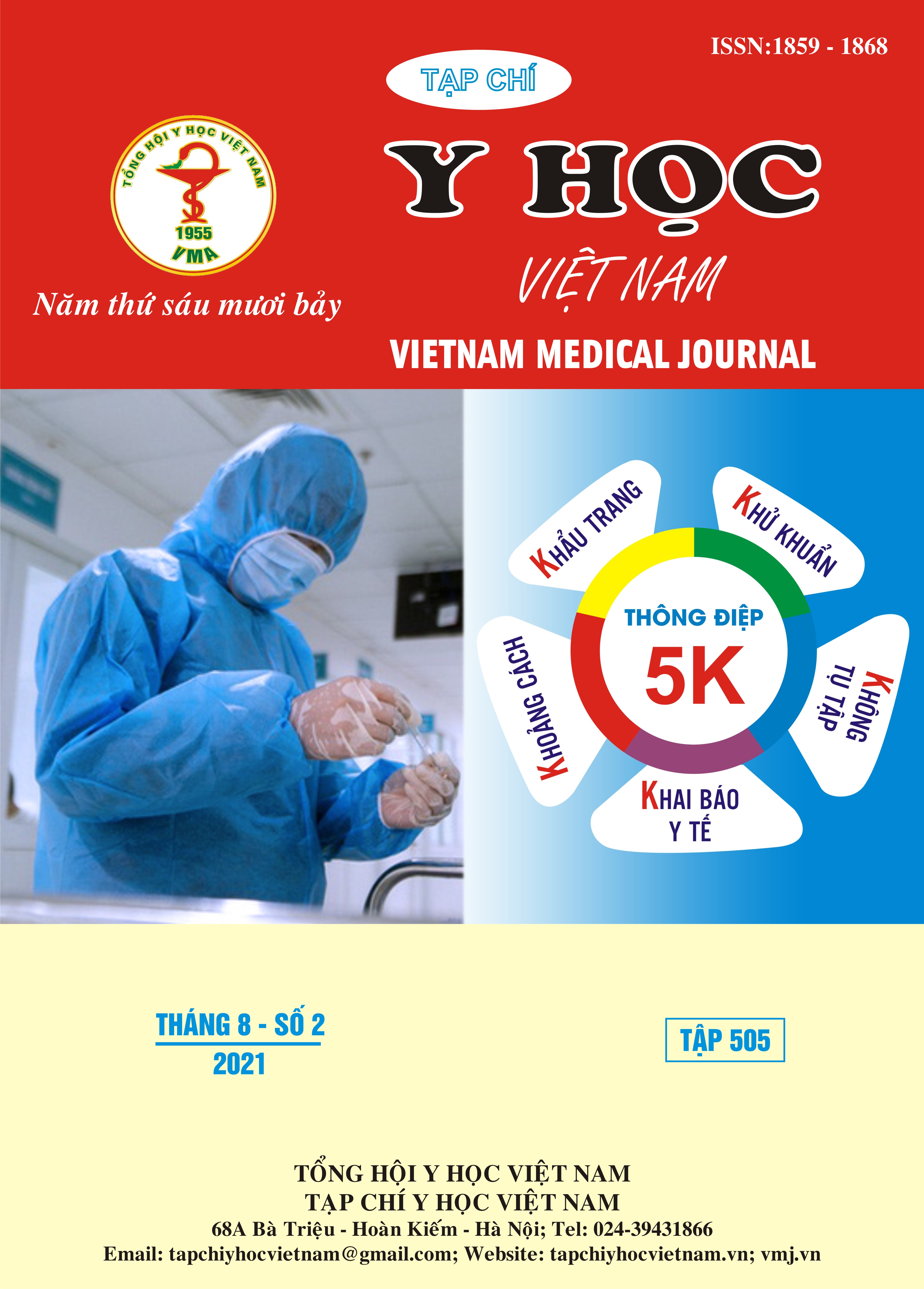DESCRIBE CLINICAL, BIOLOGICAL OF ELEVATED ANTINUCLEAR ANTIBODY TEST IN ADULT PATIENTS WITH IMMUNE THROMBOCYTOPENIC PURPURA
Main Article Content
Abstract
Objective: We describe the incidence, clinical, biological, and initial treatment in adults newly diagnosed with Immune thrombocytopenia purpura (ITP) tested for antinuclear antibodies (ANA). Material and Methods: We retrospectively reviewed the medical records of 149 aldults (age > 15) diagnosed with newly diagnosed ITP in Hematology department, Cho Ray hospital between February 2020 – June 2021. They had ANA testing during their initial work-up were included. Results: 149 pateints were included in the study. Male/female ratio of 1/2.46. The median age is 46.5 years. The rate of bleeding at admission was 94%, of which the most was grade II accounting for 60.4%, severe bleeding grade IV accounted for 10.7% (Grading of bleeding symptoms by IWG 2013). The first is skin bleeding with 88.7%, followed by visible mucosae bleeding 48.9%. The study also recorded 7/149 (5%) patients with intracranial bleeding confirmed by CT scan. 49% of patients were admitted to hospital with anemia confirmed by Hemoglobin levels. 40/149 pateints were were positive for ANA, 5/149 had “cut off value” in results. 2/143 (1.4%) patients had positive not only anti DsDNA but also ANA. Patients reduced C3 and C4 by 10/125 (8%) and 13/125 (10.4%), respectively. There was no difference in sex, age, history of disease, platelets count, type of bleed, hospital length of stay, amount of blood products. Factors associated with newly diagnosed ITP had positive ANA are grade of bleeding và Hemoglobin levels. Conclusion: Our study, a positive ANA test is present in 26.8% (95%CI:19.9-34%) of adults with newly diagnosed ITP and highest in screening test autoimmune disorders (ANA, anti dsDNA, C3, C4). We analyzed the relationship between positive ANA and ITP clinical course. Compared to patients with ANA negative, those with ANA positive presented with higher anemia, lower Hemoglobin levels, had a higher risk of grading severity of bleeding.
Article Details
Keywords
ITP newly diagnosed, ANA, anti DsDNA
References
2. Aledort L. M., Hayward C. P., Chen M. G., Nichol J. L., Bussel J. (2004), "Prospective screening of 205 patients with ITP, including diagnosis, serological markers, and the relationship between platelet counts, endogenous thrombopoietin, and circulating antithrombopoietin antibodies". Am J Hematol, 76 (3), pp. 205-13.
3. Dal M. S., Karakus A., Dal T., Aydin B. B., Hattapoglu E., et al. (2017), "Assessment of the underlying causes of the immune thrombocytopenia: Ten years experience". J Pak Med Assoc, 67 (7), pp. 1004-1008.
4. Ezzat Loui (2017), "The Effect of Anti-Nuclear Antibody Positivity on Immune Thrombocytopenic Purpura and its Clinical Course". Hematology, Blood Transfusion & Disorder, 4, pp. 1-3.
5. Khellaf M., Chabrol A., Mahevas M., Roudot-Thoraval F., Limal N., et al. (2014), "Hydroxychloroquine is a good second-line treatment for adults with immune thrombocytopenia and positive antinuclear antibodies". Am J Hematol, 89 (2), pp. 194-8.
6. Moulis G., Germain J., Comont T., Brun N., Dingremont C., et al. (2017), "Newly diagnosed immune thrombocytopenia adults: Clinical epidemiology, exposure to treatments, and evolution. Results of the CARMEN multicenter prospective cohort". Am J Hematol, 92 (6), pp. 493-500.
7. Provan D., Arnold D. M., Bussel J. B., Chong B. H., Cooper N., et al. (2019), "Updated international consensus report on the investigation and management of primary immune thrombocytopenia". Blood Adv, 3 (22), pp. 3780-3817.
8. Rodeghiero F., Michel M., Gernsheimer T., Ruggeri M., Blanchette V., et al. (2013), "Standardization of bleeding assessment in immune thrombocytopenia: report from the International Working Group". Blood, 121 (14), pp. 2596-606.


